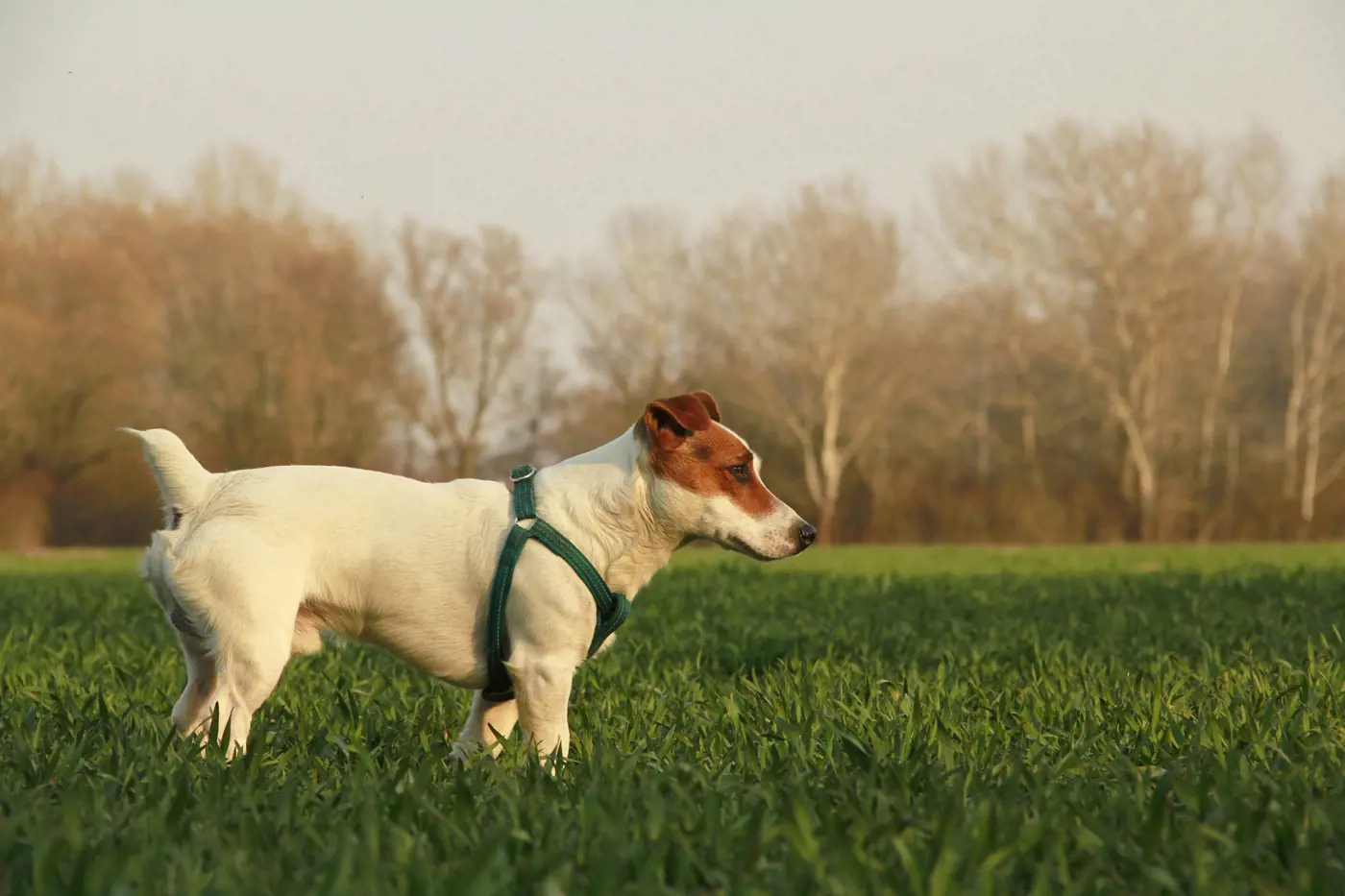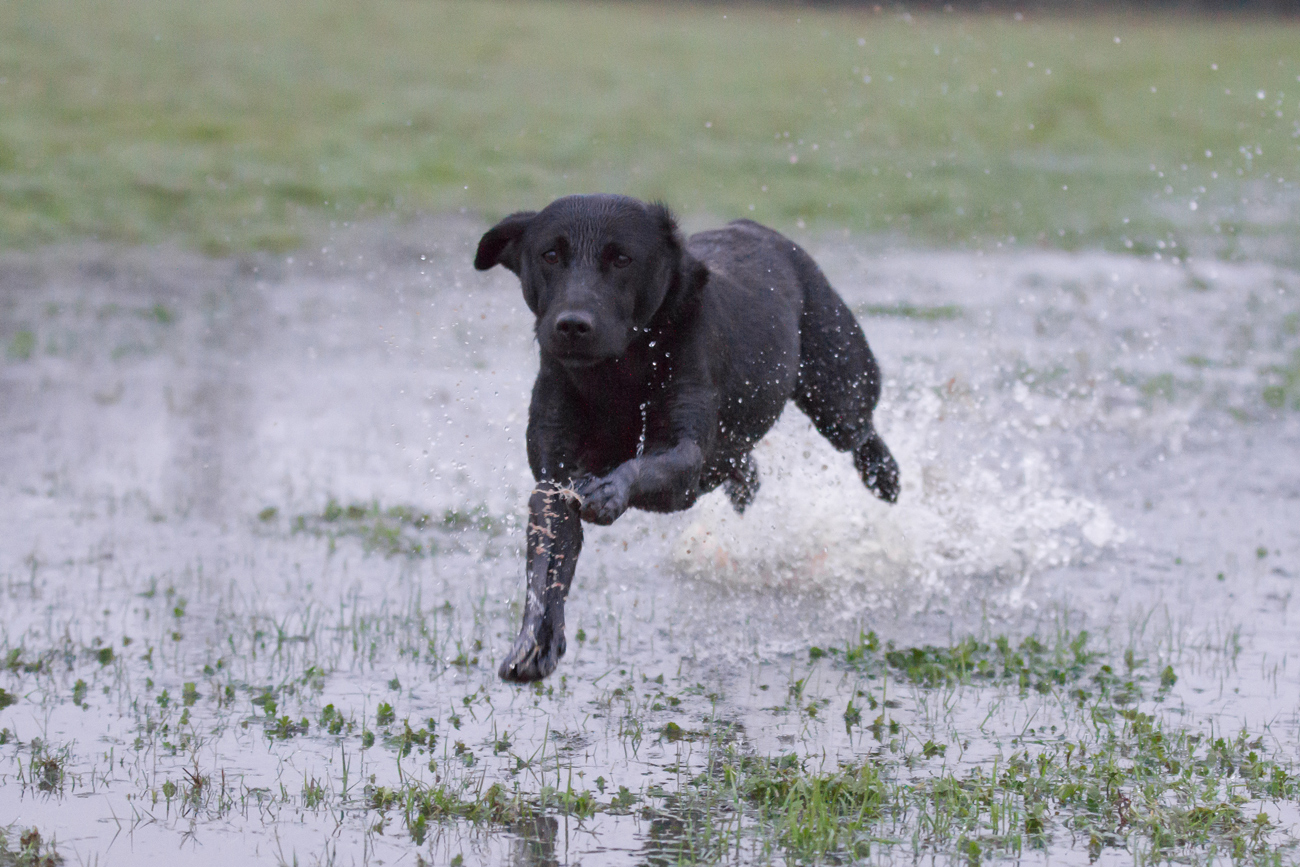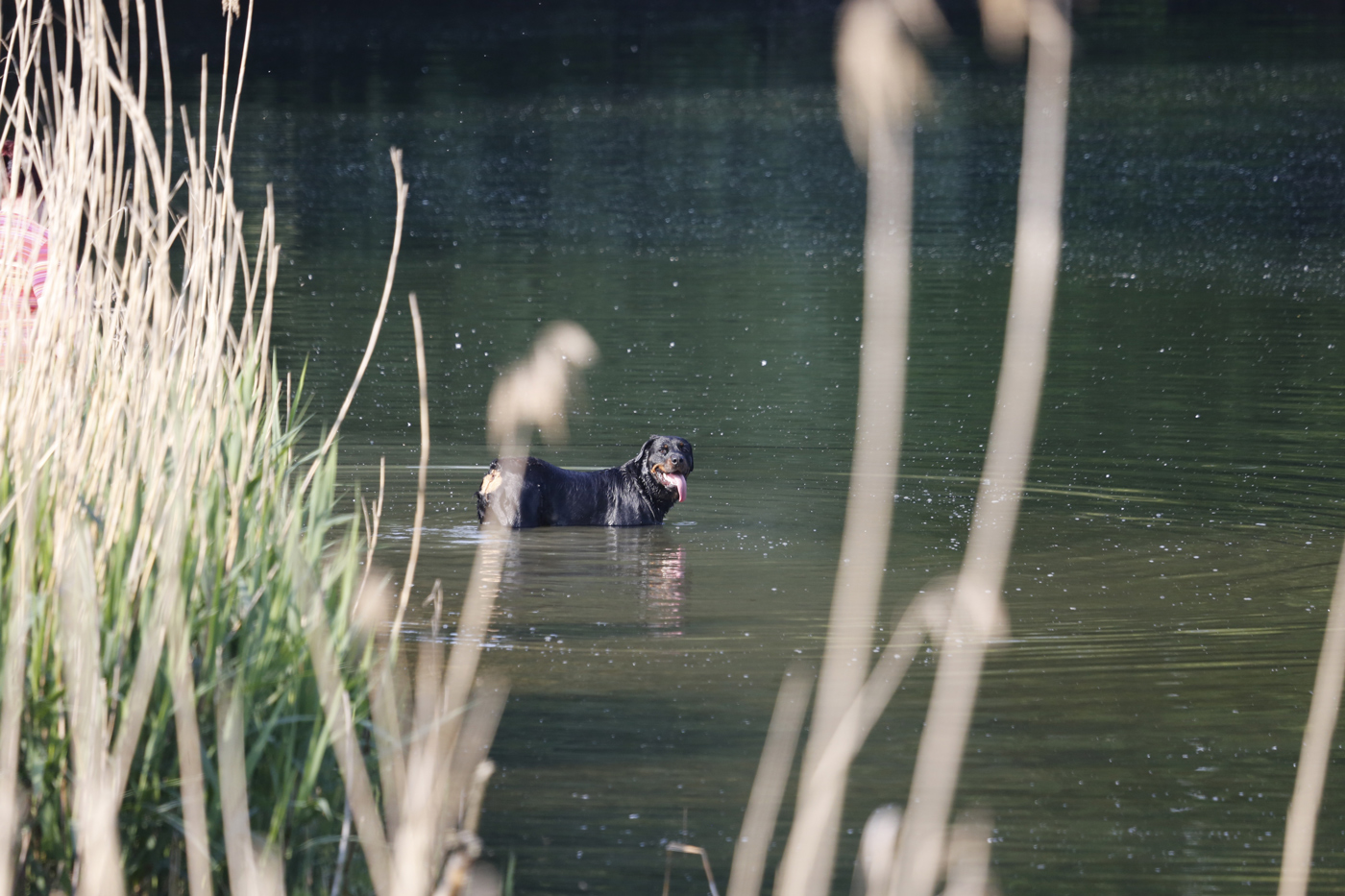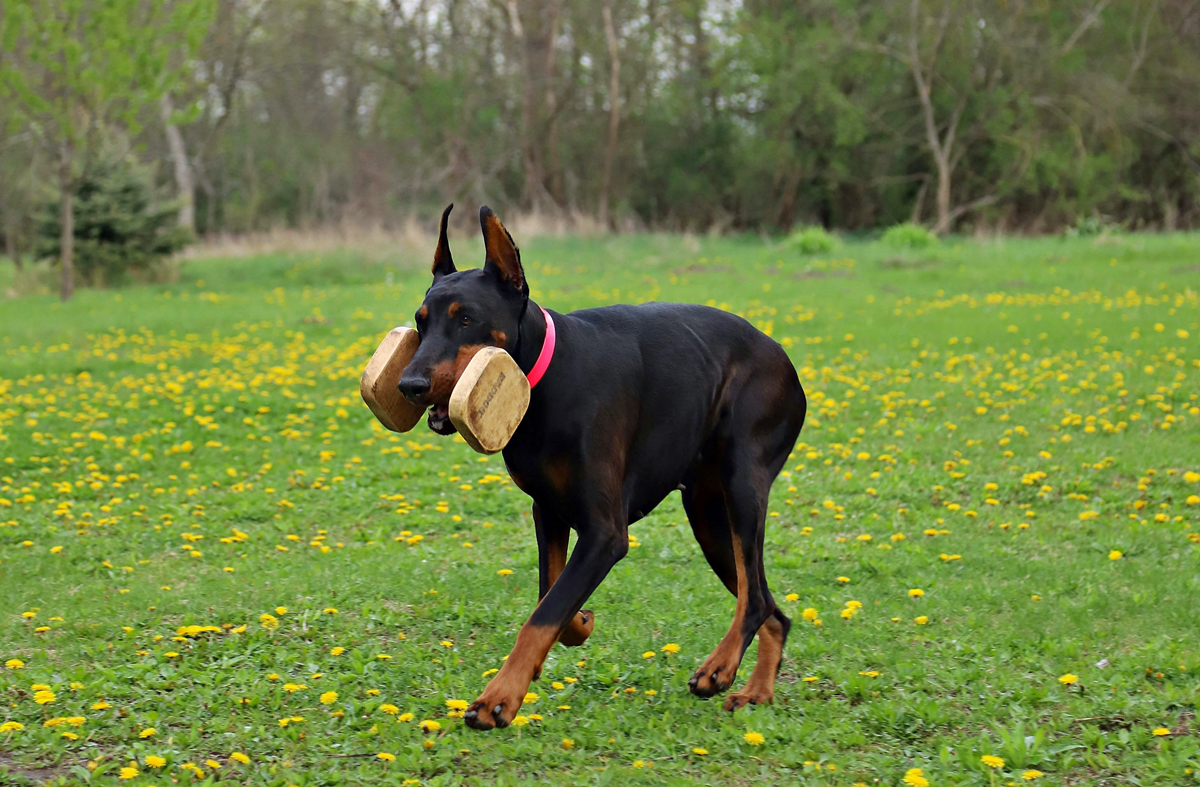What is tail docking?
17th July, 2020

The practice of removing or shortening a dog’s tail used to be commonplace, but it is now illegal in the UK, apart from a few limited exceptions. Why would you ever dock a dog’s tail, and what are the circumstances in which you can still do so under the law?
If your dog has a particularly waggy tail, it may get injured as it explores in hedges and woodland.
While tail docking isn't the answer, insurance for your pet can help cover vet bills if your dog needs emergency medical treatment. It must be mentioned that insurance won’t cover the fees for docking or any issues that may result or be related due to the tail being docked.
Docking dog’s tails in history
The sight of a dog with a wagging tail is a thing of joy to most dog lovers, but throughout history many dogs have had their tails removed. The reasoning behind the practice was varied.
There was an ancient (incorrect) belief, dating back to Roman times, that the tail tip and the tongue was involved in dogs contracting rabies, so tails and tongue tips were removed to prevent the disease.
In the 17th century a tax was imposed on pet dogs, kept as companions, as opposed to working dogs used in pursuits such as farming and hunting.
To avoid paying the tax, many dogs had their tails removed to indicate that they were working dogs and therefore not taxable.
There was also a belief that working dogs may injure their tails in the course of their duties, making removal a safer option, especially for breeds with long tails.
For many breeds, removal was also an aesthetic choice. For example, in the past, pedigree shows sometimes specified that dogs of particular breeds must have dock tails to qualify for entry.

Why would you dock a dog's tail?
The question of why you would dock a dog's tail can be multifaceted. Historically, tail docking was performed for practical reasons. Certain breeds were developed to work in specific roles where a long tail could be a liability. For instance, herding and hunting dogs might have their tails docked to prevent tail injuries when working in dense brush or undergrowth.
Similarly, for some breeds, docking is carried out to maintain a specific breed standard or aesthetic appearance. However, it's important to note that this practice is increasingly viewed as unnecessary and even cruel by many animal welfare organisations and is illegal in some countries. The British Veterinary Association, for instance, opposes routine tail docking, recommending that it only be done when there's a medical necessity.
Hence, while there may be historical or breed-specific reasons for why one would dock a dog's tail, it's an area where attitudes are shifting towards prioritising animal welfare over aesthetic preferences or outdated practical considerations.
The ban on tail docking
In 2007, the practice of tail docking was banned in England and Wales.
The law states that it is an offence to have tail docking carried out and the penalty for doing so is up to two years’ imprisonment and an unlimited fine. Similar laws apply in Scotland and Northern Ireland.
The law has some exceptions, particularly in relation to working dogs.
If a dog is a spaniel, terrier, or a dog commonly used for hunting, pointing, retrieving or is a crossbreed involving one of these breeds, the dog may have its tail docked in order to work in law enforcement, pest control, or lawful shooting of animals.
There is also an exemption for dogs whose tails need to be removed for therapeutic reasons, as advised by a vet.
Insurance for a pet is important for dog owners to ensure you do not face significant vet bills as you help your pet recover from such an operation.
In order to dock a dog’s tail using one of these exemptions, a vet must complete a certification process confirming that the dog meets one of the criteria.
Supporting evidence is required, such as: a statement confirming the dog is one of the listed breeds and will be used as a working dog; identification from an authority such as police, HMRC, or the prison service confirming the dog will be used for one of the given reasons such as law enforcement; or a letter from a relevant person, such as a gamekeeper or shoot organiser.
What dog breeds need their tails docked?
Historically, breeds like Boxers, Doberman Pinschers, Rottweilers, and Yorkshire Terriers have had their tails docked. For working dogs such as these, tail docking was believed to prevent injuries while hunting or herding.
Other breeds like the Pembroke Welsh Corgi and Australian Shepherd have naturally bobbed (short) tails but may undergo docking for consistency in appearance.
Others maintain that for certain breeds, docking can prevent future injuries. For instance, high-energy dogs with thin tails like Greyhounds are argued to be at risk of injuring their tails by wagging them too vigorously against hard objects.

The process of docking
Before the procedure was outlawed, dogs used to have docking carried out at home by either snipping off the tail of a very young pup with scissors, or wrapping the tail with a tight elastic tie so the blood circulation is restricted and the tail eventually falls off. Now it’s best left to a professional vet.
Unless it is carried out for therapeutic reasons, docking is carried out when a pup is very young.
A vet removes the tail as a surgical procedure, without anaesthetic if the pup is under five days old, or with anaesthetic up to eight weeks.
The procedure is controversial, with some claiming that the pups experience pain and can lead to chronic pain if poorly carried out.
Others claim that discomfort is only momentary and that the puppies are so small that their tissues are soft and nerve systems are underdeveloped, preventing real pain.
Opponents of the procedure say that dogs without a tail are deprived of a means of expression in later life and that the risk of tail injury in working dogs is not significant to justify the procedure.
Some dogs can even develop tumours or nerve damage around the removal site.
Once a dog’s tail has been docked, the owner must keep paperwork to show the procedure was carried out in the approved manner.
A puppy must be microchipped at the same clinic that carried out the docking. If the dog is sold, the docking certificate should be transferred to the new owner.
Is docking a dog's tail cruel?
The question, "Is docking a dog's tail cruel?" is one that has sparked considerable debate among canine enthusiasts, veterinarians, and animal welfare organisations. Docking, the practice of surgically shortening a dog's tail, is often carried out for breed-specific aesthetics or perceived health benefits. However, the process has been criticised as it involves amputating a part of the dog's body, often without anaesthesia.
It is important to note that a dog's tail serves multiple purposes including balance and communication. Therefore, its removal could potentially interfere with these functions. Furthermore, complications such as infection, pain, and nerve damage could arise from the procedure, presenting unnecessary health risks to the dog.
As such, many consider tail docking to be a form of animal cruelty due to the potential physical and psychological harm it may cause. While it is acknowledged that there may be specific cases where tail docking is necessary for medical reasons, these are exceptions rather than the rule.

Is tail docking decreasing?
Many countries, including those in the European Union, have enacted legislation banning or severely restricting tail docking unless it is performed for therapeutic reasons. This trend is increasingly being seen in other parts of the world too.
Moreover, an increasing number of breeders and pet owners are recognising the potential health risks and ethical concerns associated with this procedure, leading to a decline in its prevalence.
Professional organisations such as the British Veterinary Association are also discouraging the practice unless necessary for medical reasons. Therefore, while hard statistics may vary, there is a clear global trend towards reducing and potentially eliminating non-therapeutic tail docking.
Is tail docking the same as tail amputation?
While the procedures might seem similar at a glance, tail docking and tail amputation are not the same. The question, "is tail docking the same as tail amputation?" reflects a common misconception.
Tail docking is a preventative measure, often performed on puppies within a few days of birth. This practice, which involves removing a portion of the tail, is typically undertaken for breed standards, perceived health benefits or docking for cosmetic purposes, despite ongoing debates about its ethics and necessity.
On the other hand, tail amputation is a surgical procedure typically performed on adult animals, often as a result of injury or disease. This operation is carried out under anaesthesia by a veterinary professional and aims to prevent injury, further harm or discomfort to the animal.
Unlike tail docking, which is often done for aesthetic or prophylactic reasons, tail amputation is generally a medical necessity intended to enhance an animal's quality of life. Therefore, while both procedures involve altering the length of an animal's tail, their purposes, methods, and contexts differ significantly.
How well is the law on tail docking enforced?
In theory, dogs with docked tails should be working dogs, rather than reared to be pets.
In practice, unscrupulous breeders dock the tails of dogs who will be kept as pets and the chances of being caught for this offence are fairly slim.
For example, in 2017 only one person was convicted for illegal docking, and in 2016 there were no convictions.
Some breeders dock their puppies’ tails themselves, leaving the dogs vulnerable to pain and long-term health problems if the procedure is not carried out properly.
For example, in March 2019, a married couple from Rotherham was banned from keeping dogs for five years after they removed four terrier pups’ tails.
A vet said the procedure had caused unnecessary suffering to the dogs and represented ‘an act of mutilation.’ The owners were ordered to pay £600 costs and carry out 150 hours’ unpaid work.
If your dog injures its tail and you’re not sure what to do, Purely Pets customers can call the 24-Hour Vet Helpline and get advice from a qualified veterinary professional.
Are you looking for specialist pets insurance for your beloved pup? Why not get a quote from Purely Pets today?
Helpful Pages
Recent Posts
Pet Insurance Quote
- 98% claims paid *
- Claims paid directly to vets
- 24/7 vet video consultations
- Interest free monthly payments




